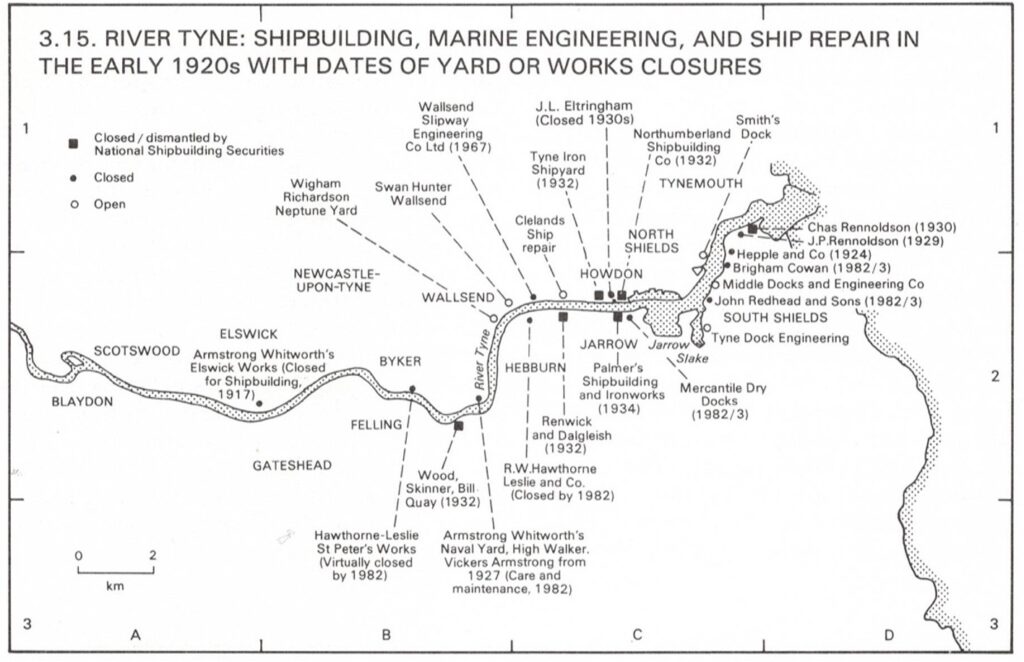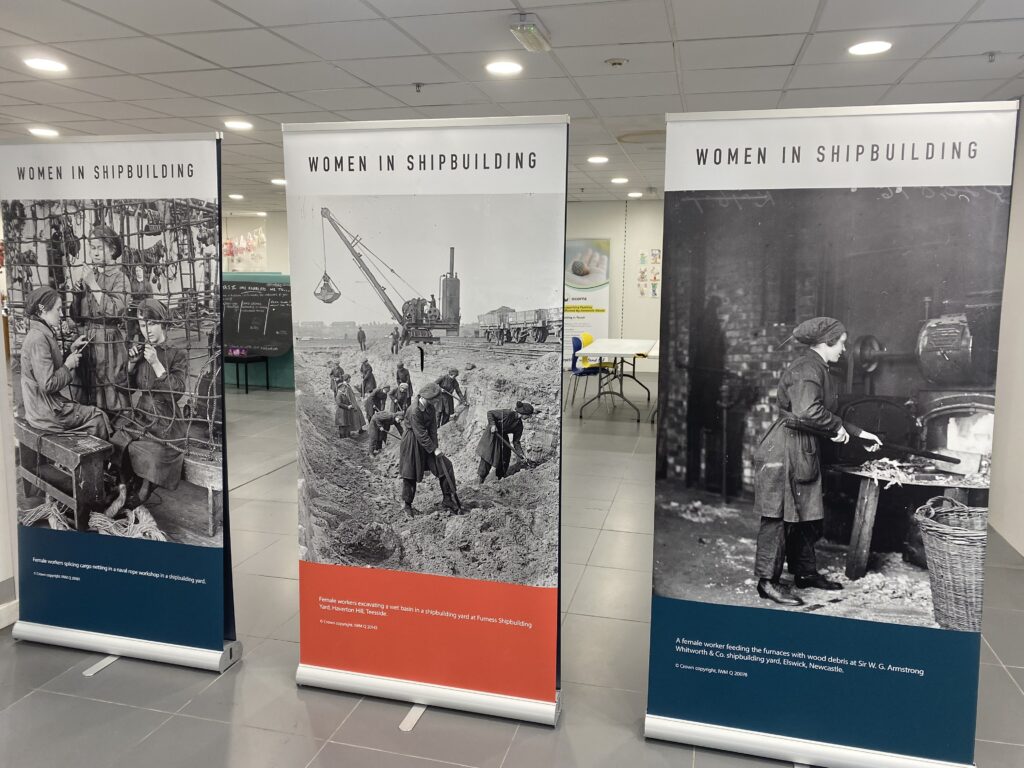Joe Redmayne has joined Newcastle University’s Oral History Unit and Collective (NUOHUC) as a researcher to assist Historic England’s ‘Women in Shipbuilding’ project. The project works in partnership with NUOHUC; Women’s Engineering Society (WES); Imperial War Museums (IWM); and in collaboration with Remembering the Past, North Tyneside Art Studio and North Tyneside Council. It is funded by the Lloyds Register Foundation. For press reports about the project see the following links: BBC; ITV; Northern Soul; and Cultured North East. Joe writes:

The ‘Women in Shipbuilding’ project launched on 24 October with a pop-up exhibition at Wallsend Forum shopping centre which showcased IWM’s collection of photographs by professional wartime photographer Horace Nicholls. The latter travelled to the North-East and photographed women working on board ships and shipyards in Tyneside. Nicholls visited sites owned by W. G. Armstrong, Whitworth and Company; Palmers Shipbuilding Company Limited; and Swan, Hunter and Wigham Richardson Limited.

The exhibition images is acting as a focal point for the North-East community to contribute to their own family stories, photographs and memorabilia relating to what is a neglected area of the region’s history. It is anticipated that these materials will act as a prompt for oral history from community members which will then be scaffolded and cross-analysed with previous oral testimony collected in the past. Through this inter-generational memory, the project will help demonstrate the connectivity between people, coastal places, and heritage, including industrial heritage.
After the exhibition, Joe will collate photographs, secondary sources, archival material, as well as previously recorded oral histories. By spring 2024, he will have prepared a brief report about the ongoing project and material found, alongside a summary publication for the Historic England Research Magazine.




Although women’s First World War experiences in munition factories are comparatively well told, there remains a lack of attention paid to the role of women in marine engineering. Many women who worked in marine engineering on board ships undertook tasks of renewing electric wires, and fittings, as well as other duties of cleaning and scrubbing the ship. Besides onboard work, women were employed in various shipyard shops where construction and repair work of vessels was undertaken. In the electrical departments, women performed tasks of winding armatures, making parts for firing-gears, polishing, buffing and repairing electrical apparatus. In addition, women performed repair work and received consignments of electrical apparatus damaged on board by the weather at sea. Repair work tasks included various operations such as lacquering guards for lamps and radiator fronts, repairing junction and section boxes, fire-control instruments, and automatic searchlights. Similarly, in the constructional department, women operated on bulkhead pieces and metal work of various kinds, in oxy-acetylene welding and occasionally foundry work.

The gap in the historiography and lack of understanding of women’s experience in marine engineering has encouraged Dr. Antony Firth, Historic England’s Head of Marine & Coastal Heritage, to develop the crowd-sourcing project ‘Women in Shipbuilding’. The project dovetails with the Lloyd’s Register Foundation’s initiative of Rewriting Women in Maritime History. By increasing awareness of the role that women played in shipbuilding, it is hoped that it will inspire women to consider a career in marine engineering in the future.
If you know anyone willing to contribute their own privately held photographs, documents, stories and memorabilia which may be of interest to the project. Please contact Joe via email at j.redmayne2@newcastle.ac.uk.
